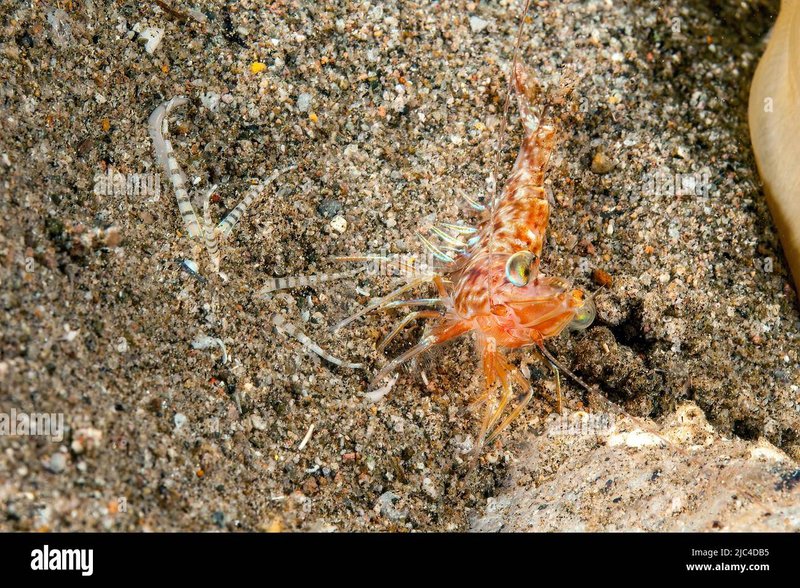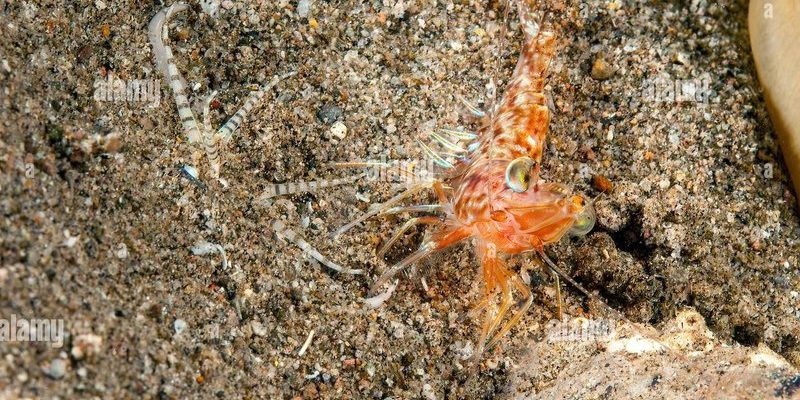
Imagine a bobbit worm as an underwater ambush predator, patiently waiting for the perfect moment to strike. With a body that can grow up to 10 feet long, these worms can be intimidating! They primarily target small fish and crustaceans, and the way they choose their prey is both strategic and intriguing. So, let’s dig into the nitty-gritty of how these worms decide between fish and crustaceans for their next meal.
Meet the Bobbit Worm: A Brief Overview
Bobbit worms belong to the family Eunicidae, and they’re known for their striking appearance and predatory habits. These marine worms are typically found buried in the sand or hidden within rocks, making them masters of camouflage. Their long, segmented bodies are covered in bristles that help them navigate their environment.
What’s really captivating about bobbit worms is their hunting technique. They use their sharp, hidden jaws to capture prey in a flash. When a fish or crustacean ventures too close, the worm springs into action, snapping up its meal without much warning. This hunting style isn’t just impressive; it also showcases the worm’s adaptation to its surroundings.
You might be wondering why these worms are drawn to certain prey over others. The answer lies in their dietary needs and ecological role. As opportunistic feeders, bobbit worms have evolved to thrive in their environments by selecting prey that provides the most energy, which brings us to the next important aspect: their prey selection process.
How Do Bobbit Worms Choose Their Prey?
Bobbit worms have a keen sense of their environment, and their choice between fish and crustaceans often depends on availability and accessibility. When it comes to prey selection, a few key factors come into play:
1. Prey Size: Bobbit worms prefer prey that is manageable in size. Small fish can often be easier to catch than larger ones, making them a more favorable option.
2. Movement and Behavior: The swimming patterns or movements of different prey species can also affect their selection. For instance, a fish that swims erratically might be an easier target than a crustacean that’s more cautious.
This adaptability is what makes these worms such effective predators. They can alter their hunting strategies based on the prevailing conditions and the prey they encounter.
Bobbit Worms and Fish: A Delicate Balance
Fish are a significant part of the bobbit worm’s diet, and there’s a unique relationship between these two groups. Fish tend to frequent the same environments as bobbit worms, which increases the likelihood of a successful catch.
One interesting aspect of this predator-prey relationship is the size and type of fish that bobbit worms typically go after. They often target small baitfish or juvenile species that wander too close to their hiding spots. This strategy is vital because it allows the worms to feed without drawing too much attention to themselves.
When a bobbit worm homes in on a fish, it relies on its camouflage to stay hidden. The worm’s segments blend into the substrate while it waits for the perfect moment to strike. Once a fish gets too close, it’s game over for the fish.
The Role of Crustaceans in the Bobbit Worm’s Diet
While fish are a primary target, crustaceans also make up a crucial part of a bobbit worm’s diet. From shrimp to small crabs, these creatures present a different kind of challenge. Crustaceans tend to have hard exoskeletons, making them tougher to consume. However, bobbit worms have adapted their hunting tactics to tackle this obstacle.
When hunting crustaceans, bobbit worms often look for individuals that are molting or weakened. During molting, a crustacean’s exoskeleton is softer, making it an easier target. This strategic approach helps bobbit worms maximize their energy intake while minimizing the risks associated with capturing harder prey.
Just like with fish, the effectiveness of this hunting strategy relies on the worm’s ability to remain hidden. By remaining buried and camouflaged, the bobbit worm can swiftly attack unsuspecting crustaceans that come within striking distance.
Comparing Fish and Crustaceans: Nutritional Value
So, why do bobbit worms sometimes prefer fish over crustaceans and vice versa? It all comes down to nutritional value and energy requirements.
– Fish: Generally, fish provide a good balance of protein and fats. For bobbit worms, this makes fish a highly desirable meal, especially if the worms are looking to replenish their energy quickly.
– Crustaceans: While crustaceans might be tougher, they also offer essential nutrients and can be a valuable part of the worm’s diet.
By choosing between these two prey types based on availability, bobbit worms ensure that they get the nutrition they need to thrive in their unlikely homes beneath the sea.
Environmental Impact on Prey Selection
The environment plays a critical role in what bobbit worms can catch. Changes in water temperature, pollution, or habitat destruction can alter the availability of fish and crustaceans, thus impacting the worm’s diet.
When water temperatures rise, for example, fish might migrate to cooler depths, making them harder to catch. Alternatively, changes in habitat might increase the population of certain crustaceans, prompting the worms to adapt and choose these creatures more frequently.
Understanding how bobbit worms respond to these environmental changes helps us appreciate their role in the marine ecosystem. They not only serve as predators but also show how delicate and interconnected ocean life can be.
The Bobbit Worm’s Survival Skills
In the grand scheme of things, bobbit worms have developed impressive skills for survival. Their ability to select between fish and crustaceans based on factors like availability, size, and energy needs demonstrates their adaptability in a competitive environment.
These skills are invaluable for their survival and for maintaining the balance within their ecosystem. By effectively managing their prey selection, bobbit worms contribute to the overall health of their marine habitats.
As we continue to explore the oceans and learn more about these remarkable creatures, it’s essential to recognize the intricate dynamics that govern their behavior. The relationship between bobbit worms, fish, and crustaceans illustrates the beauty and complexity of life under the sea.
In conclusion, the prey selection of bobbit worms—whether they choose fish or crustaceans—is a fascinating aspect of their biology. Their strategic approach to hunting and adaptability in varying environments not only highlight their predatory skills but also underscore their importance in marine ecosystems. By understanding these dynamics, we can better appreciate the richness of marine life and the delicate balance that sustains it.

